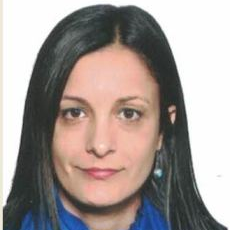Ionic Liquids as Task-Specific Materials
A special issue of Nanomaterials (ISSN 2079-4991). This special issue belongs to the section "Nanofabrication and Nanomanufacturing".
Deadline for manuscript submissions: closed (30 June 2022) | Viewed by 22110
Special Issue Editors
Interests: ionic liquids; chemical engineering; thermodynamic study; phase equilibria; separation processes
Special Issues, Collections and Topics in MDPI journals
Interests: development of ionic liquids and eutectic systems as novel, advanced, smart materials (critical evaluation in the field of green chemistry) and their study in separation/purification processes, aqueous biphasic systems, solubilisation and aggregation mechanisms, biomolecules purification, drug delivery; pharmaceutically active ionic liquids and eutectic systems; technologies for the removal and implementation of circular economy for fluorinated compounds (greenhouse fluorinated gases (F-gases) and PFAS)
Special Issues, Collections and Topics in MDPI journals
Special Issue Information
Dear Colleagues,
Ionic liquids (ILs) have been classified as excellent supported materials, solvents and co-solvents for their capacity to dissolve, extract, and purify different compounds in a wide range of applications. These compounds are considered tuneable materials due to their capacity to form different nanosegregated domains (polar, hydrogenated apolar and fluorinated apolar) which enhances their tuneability capacities and solvent quality. Then, the ideal material can be fine-tuned through the selection of each of the nanosegregated domains, and the contribution of each type of interaction (Coulombic, van der Waals and hydrogen bonding).
Prof. Ana Belén Pereiro
Prof. João M. M. Araújo
Guest Editor
Manuscript Submission Information
Manuscripts should be submitted online at www.mdpi.com by registering and logging in to this website. Once you are registered, click here to go to the submission form. Manuscripts can be submitted until the deadline. All submissions that pass pre-check are peer-reviewed. Accepted papers will be published continuously in the journal (as soon as accepted) and will be listed together on the special issue website. Research articles, review articles as well as short communications are invited. For planned papers, a title and short abstract (about 100 words) can be sent to the Editorial Office for announcement on this website.
Submitted manuscripts should not have been published previously, nor be under consideration for publication elsewhere (except conference proceedings papers). All manuscripts are thoroughly refereed through a single-blind peer-review process. A guide for authors and other relevant information for submission of manuscripts is available on the Instructions for Authors page. Nanomaterials is an international peer-reviewed open access semimonthly journal published by MDPI.
Please visit the Instructions for Authors page before submitting a manuscript. The Article Processing Charge (APC) for publication in this open access journal is 2900 CHF (Swiss Francs). Submitted papers should be well formatted and use good English. Authors may use MDPI's English editing service prior to publication or during author revisions.
Keywords
- Ionic Liquids
- Nanomaterials
- Solvents
- Dissolution
- Extraction
Benefits of Publishing in a Special Issue
- Ease of navigation: Grouping papers by topic helps scholars navigate broad scope journals more efficiently.
- Greater discoverability: Special Issues support the reach and impact of scientific research. Articles in Special Issues are more discoverable and cited more frequently.
- Expansion of research network: Special Issues facilitate connections among authors, fostering scientific collaborations.
- External promotion: Articles in Special Issues are often promoted through the journal's social media, increasing their visibility.
- e-Book format: Special Issues with more than 10 articles can be published as dedicated e-books, ensuring wide and rapid dissemination.
Further information on MDPI's Special Issue polices can be found here.







